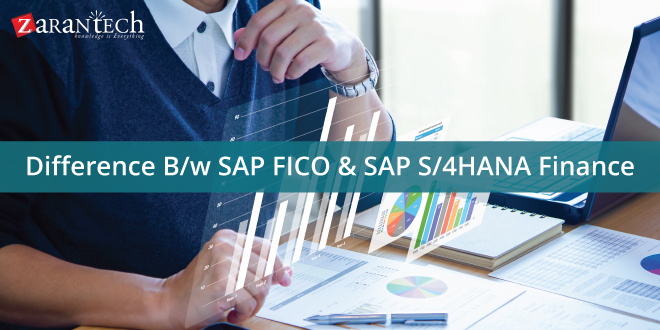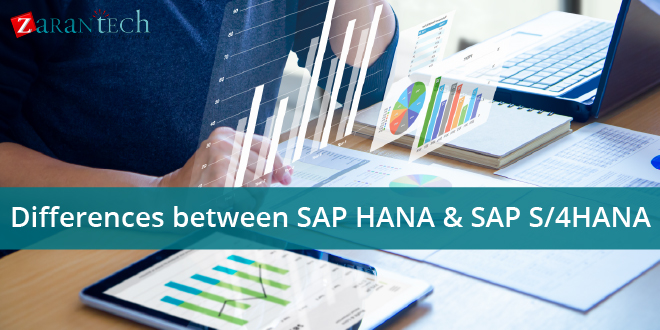Top 15 Simple Finance Interview Questions you must Prepare for in 2017
Category: SAP S/4HANA Finance Posted:Apr 06, 2017 By: Ashley Morrison
In recent times, SAP became a world leader in enterprise software. It is one of the leading software companies across the world. It provides profitable career chances for those skills as Developers or Consultants. In case you are interested in starting your career as an SAP Developer or Consultant, then it would be best to have an idea about the SAP Simple Finance interview questions.
The growth in career chances for SAP Developers and Consultants means that there is more competition for the jobs in this domain. Hence, if you want to catch your dream SAP Simple Finance job, you have to prepare deeply for your interview. The SAP Simple Finance questions and answers in this section are a worthy place to begin, to make sure that you’re well prepared for your interview. Hence, you have the ultimate opportunity of securing your job. Before jumping into the top 15 Simple Finance interview questions, let us have a quick review of what SAP Simple Finance is.
Top 15 Simple Finance Interview Questions You Must Prepare
1. Narrate the useful details of SAP Simple Finance
SAP Financial and Controlling module (which is one among the core modules of SAP) is a mature submission with attractive depth and width. However, there is a tremendous change in the world with technology. Hence, there is a need to change for the new financial regulation. In addition, there is also a requirement for instant financial report lighting. Since the world of data is rapidly changing, financial operations are in need to deal with a large volume of data that is processed at higher speeds.
With this strategy and having the benefit of a high-performance feature of the HANA, the SAP software company made its finances as well as next range control module by releasing “Simple Finance” (Finco-in short) with the SAP S/4HANA. By launching this platform, SAP eliminates some of the inconveniences with the traditional FICO module. It also comprises some influential new features.
2. Explain the role of the Transaction Manager
The Transaction Manager is responsible for coordinating the transactions in databases and maintains a record of running as well as closed transactions. When the transaction committed or rolled back, the Transaction Manager informs the concerned storage engines regarding the event. Hence, they can run required actions.
3. What is Modeling Studio?
In SAP Simple Finance, a modeling studio performs several tasks. Some of them are included in the following:
- Handle Data Services in order to enter the data from the SAP Business Warehouse
- States, which tables are placed in HANA, the initial thing is to receive metadata and then program data replication tasks.
- Utilize Data services for modeling
- Handle ERP requests connection
- Perform modeling in HANA
4. How does S/4HANA relate to Simple Finance driven by SAP HANA?
The solution of SAP Simple Finance marked the initial step in the customer’s road map of SAP S/4HANA. The solution has verified the assets of instant vision in Finance and simplification like no indexes, no redundancies, and no aggregates. SAP HANA On-Premise edition influences the entire scope of the SAP Accounting driven by SAP HANA comprised in SAP Simple Finance. In addition, the cloud edition of the S/4HANA is also intended to provide a similar scope.
5. State the ways of Migration from SAP to Simple Finance.
Here are some of the ways that state how the companies can migrate from SAP conventional FICO module to Simple Finance (that is SFINE 2.0).
- Those who are on New GL are capable of migrating directly to Simple Finance.
- Those who are on typical GL need to migrate to New GL first and then migrate to Simple Finance.
This kind of migration occurs only with SPRO and doesn’t require technical assistance. This migration is different from the central component of Finance that supports moving data distributed Enterprise Resource Planning landscape and non-SAP Enterprise Resource Planning, utilizing SLT.
6. Which edition of SAP S/4HANA do you suggest for our companies?
The On-Premise Edition of the SAP HANA is designed to suit organizations across companies, which require a broad and deep level of functionality integrated with a highly flexible range of personalization. The cloud edition of the SAP S/4HANA is designed to suit the companies, which require a standardized cloud submission primarily handling the basic business scenarios of a company or certain business set-up of business lines in industries that are integrated with a rapid innovation cycle. In addition, this edition provides the chance for clients to deploy real-world hybrid setup, combine On-Premise and Cloud solutions for extraordinary IT flexibility as well as stimulated business innovation.
7. What are the main advantages that attract customers to migrate to SAP S/4HANA?
The main vision and approach of the SAP are to support customers survive simply in the digital world. In order to deliver this mission, SAP S/4HANA redefining how enterprise software makes value. S/4HANA is mainly designed to power instant value across the business and industry lines with superior sophistication- Simplicity.
Let us explore the advantages of Simple Finance from the point of business value.
SAP S/4HANA makes the unique chance to redefine business models and power new profits in addition to revenues. With the Simple Finance, companies can easily link to devices, people as well as business networks to present additional value to their clients on any channels. Hence, offers the following benefits:
- Big Data and Internet of Things (IOT)becomes accessible to any kind of business.
- Companies can simplify their approach, power them in a real world environment and alter them as per their requirement in order to gain new proficiencies. That is, there is no further requirement for the batch processing.
- Business users can receive a vision of any kind of data from anywhere, including execution, planning, simulation, and prediction.
Let us explore the benefit of Simple Finance in the view of IT value:
- The unique chances created by the SAP S/4HANA simplify the landscape. In addition, support condenses Total Cost of Ownership (TCO) with SAP S/4HANA.
- Companies can now lessen their data footprint as well as a task with huge data sets in the seamless system (for instance, CRM, ERP, SCM, SRM, PLM co-deployed) in order to save costs of hardware, the cost of operation as well time.
- It also made innovation very simple with the open platform (that is none other than SAP HANA Cloud Edition) in order to power advanced applications like recommending, predicting and simulating while protecting standing investments.
- Business users can influence simple as well as role-based experience depending on current design principles that increase training efforts when raising productivity. The simple configuration of the SAP S/4HANA also supports customer by modeling the system.
- Enterprise gain opportunity of deployment such as On-Premise, Cloud, and Hybrid to power rapid time-to-value.
8. What are the various compression techniques available?
There are three compression techniques and they are as follows:
- Cluster encoding
- Run-length encoding
- Dictionary encoding
9. In SAP Simple Finance, even in case the client never uses the Asset Accounting, Is it mandatory to have a new Asset Accounting?
In Asset Accounting, in case there is no data that refers to the both customizing and transactional data that have to be shifted, in such a situation there is no mandatory for doing the migration steps in the Asset Accounting.
If the customer decided to use the Asset Accounting in their new asset accounting later, then they can set up the personalizing in the IMG.
10. State the main difference between the migration to SAP S/4HANA On-Premise and migration to SAP S/4 Finance.
There is no notable difference between the migration to SAP S/4 HANA On-Premise and migration to SAP S/4 Finance from the perspective of Finance. On the other hand, because of the logistics influences, it is suggested to consider several things with SAP S/4 HANA.
11. What is the basic difference between the new S/4HANA product code line and the SAP Business Unit code line?
The development process of the S/4HANA is to remove entire artifacts, which have been announced as workarounds of performance for traditional row-based RDBMS. Further, these are groups and programmed indexes, which included no value and offered rapid access to data and sums.
When it comes to the downside, these make compilation in the applications as well as difficulty in how to prevent the system to avoid incompatible updates in the groups. In addition, there is a need to develop significant code for the lengthy “Extract Transform Load” (ETL) setups including data preparation as well as exception handling routines initiated by latency.
With S/4HANA, these various kinds of workaround on limitation depends on the technical restriction are no longer needed, as the current details, as well as the time it takes to travel from the store, can be read immediately across entire inserts and updates. Hence, it removes the requirement for any kind of issues of the aggregates and index.
12. How can the partner of SAP support the migration of customer to SAP S/4HANA?
SAP comprises a well-known partner ecosystem (which covers systems integrator and value-added retailers). This ecosystem is ready to service and resell SAP Simple Finance for the available as well as new customers to develop future inventions. Partners handled surprisingly more than 50 percentage of the Business Suite of SAP that is powered by HANA. SAP and Partners will help customers on their digital journey with migration, system shifting in the cloud as well as deployment suites for fast time to value. Entire organization, regardless of the sizes will experience advantage from the ultimate quality service and reseller abilities that partners offer.
13. How is the SQL statement executed?
In the database of the HANA, each SQL query statement is executed with the transaction reference. For each new transaction, a new session is allotted.
14. What are the Various Components of SAP HANA?
- SAP HANA DB
- SAP HANA Appliance
- SAP HANA Studio
- SAP HANA Application cloud
15. List the key features of the SAP Simple Finance?
The following are some of the available key features of the SAP Simple Finance:
Financial Planning and Analysis
With SAP Simple Finance, companies can forecast, budget and plan as an ongoing approach. With the advantage of Predictive Analysis, companies can forecast the influence of business decisions on their organization financial reports.
Finance and Accounting
With the benefits of advanced Accounting and Finance features, companies can satisfy the legal terms. Further, they can finish the reports of Finance on time.
Financial Risk Management
With the benefit of Predictive Analysis, companies can determine the risks present in the processes of Finance at the initial stage itself and take steps to solve them. It is effortless to determine the best feasible investment rates regarding the market standards.
Compliance and Risk Management
With the strong financial approach, it is effortless to avoid unauthorized access to important data in the enterprise. It is simple to identify abuse as well as fraud. The companies can able to balance the risk involved in entire financial processes.
Conclusion
Hope, the above interview questions and answers of Simple Finance would remain noteworthy while you prepare for your interview. In addition to these, it is suggested to prepare the core concepts of Simple Finance. To learn more about our courses, please visit our website.
Check out this insightful video SAP S4HANA Finance – Financial Accounting in SAP S4 HANA (PART 1)
You may also like to read: What makes SAP Simple Finance a High ROI Investment?





 99999999 (Toll Free)
99999999 (Toll Free)  +91 9999999
+91 9999999